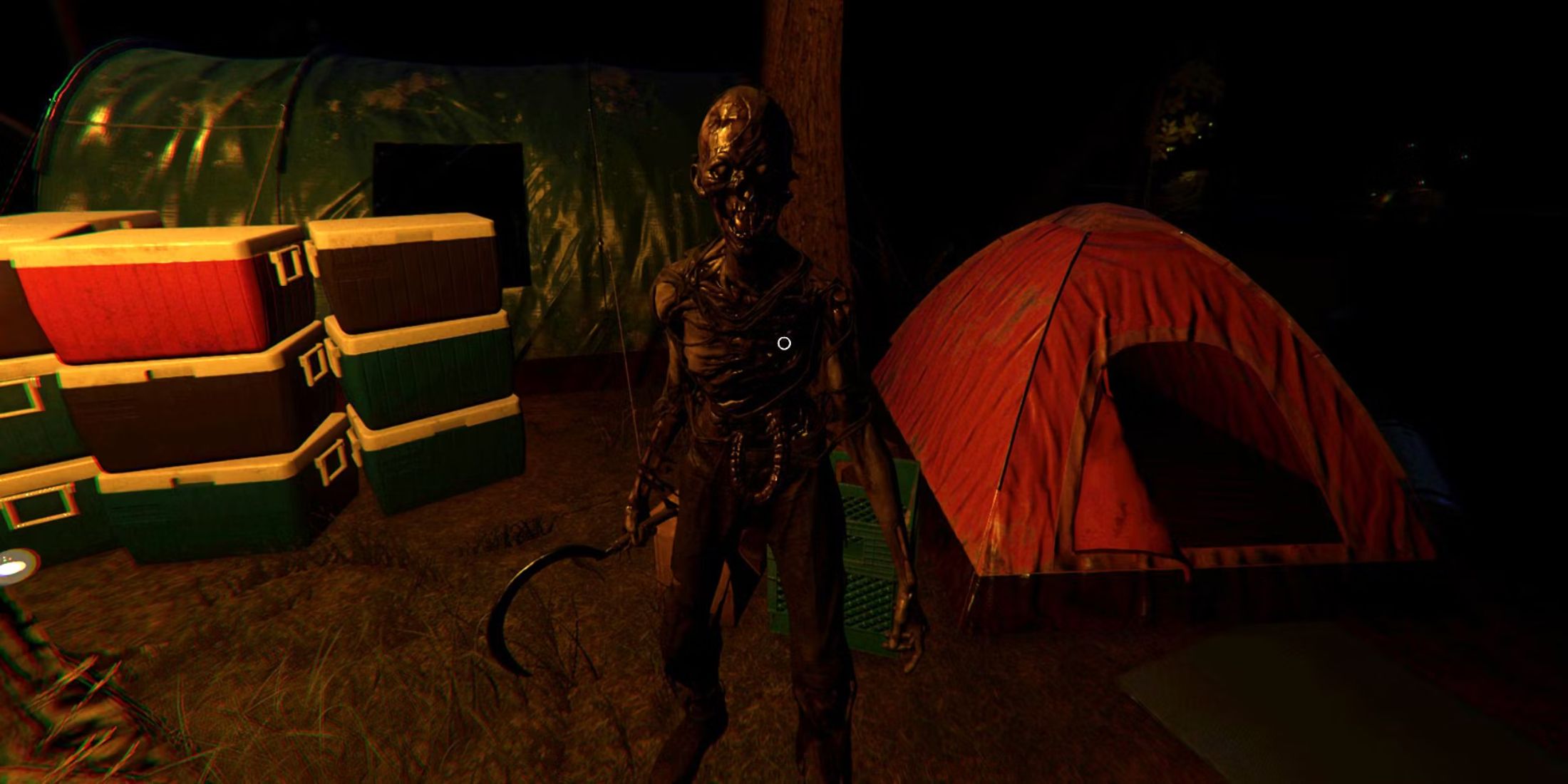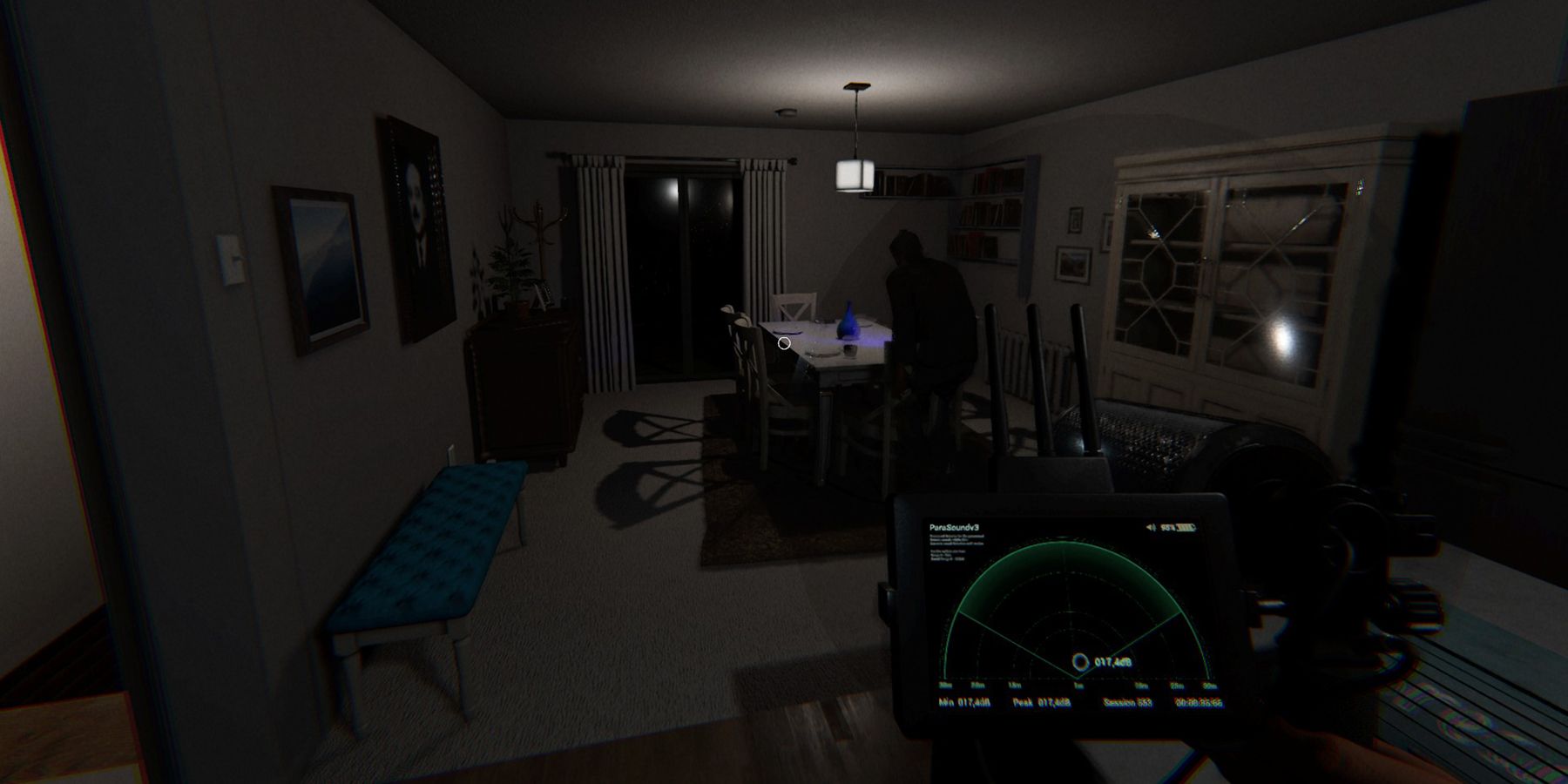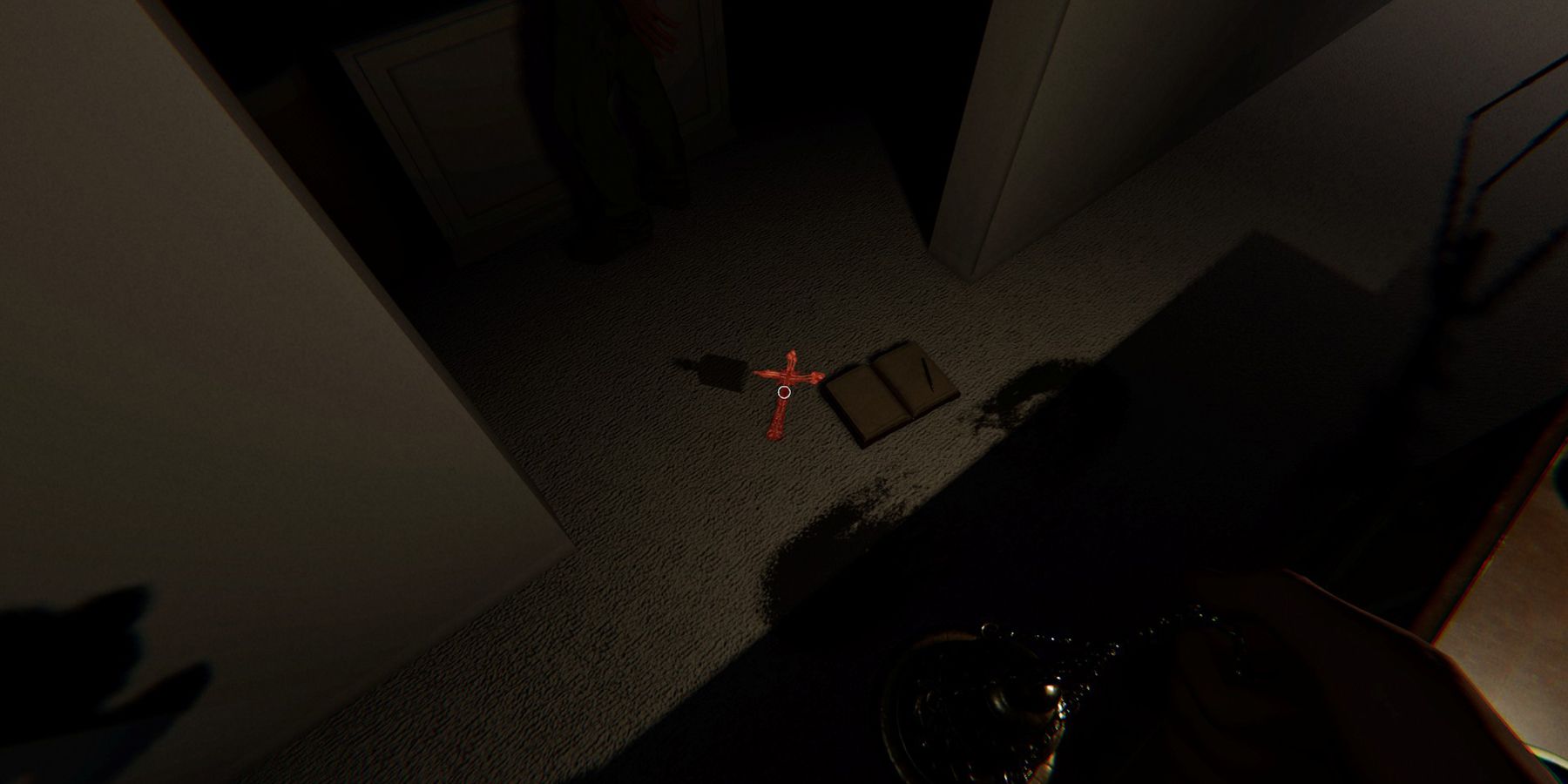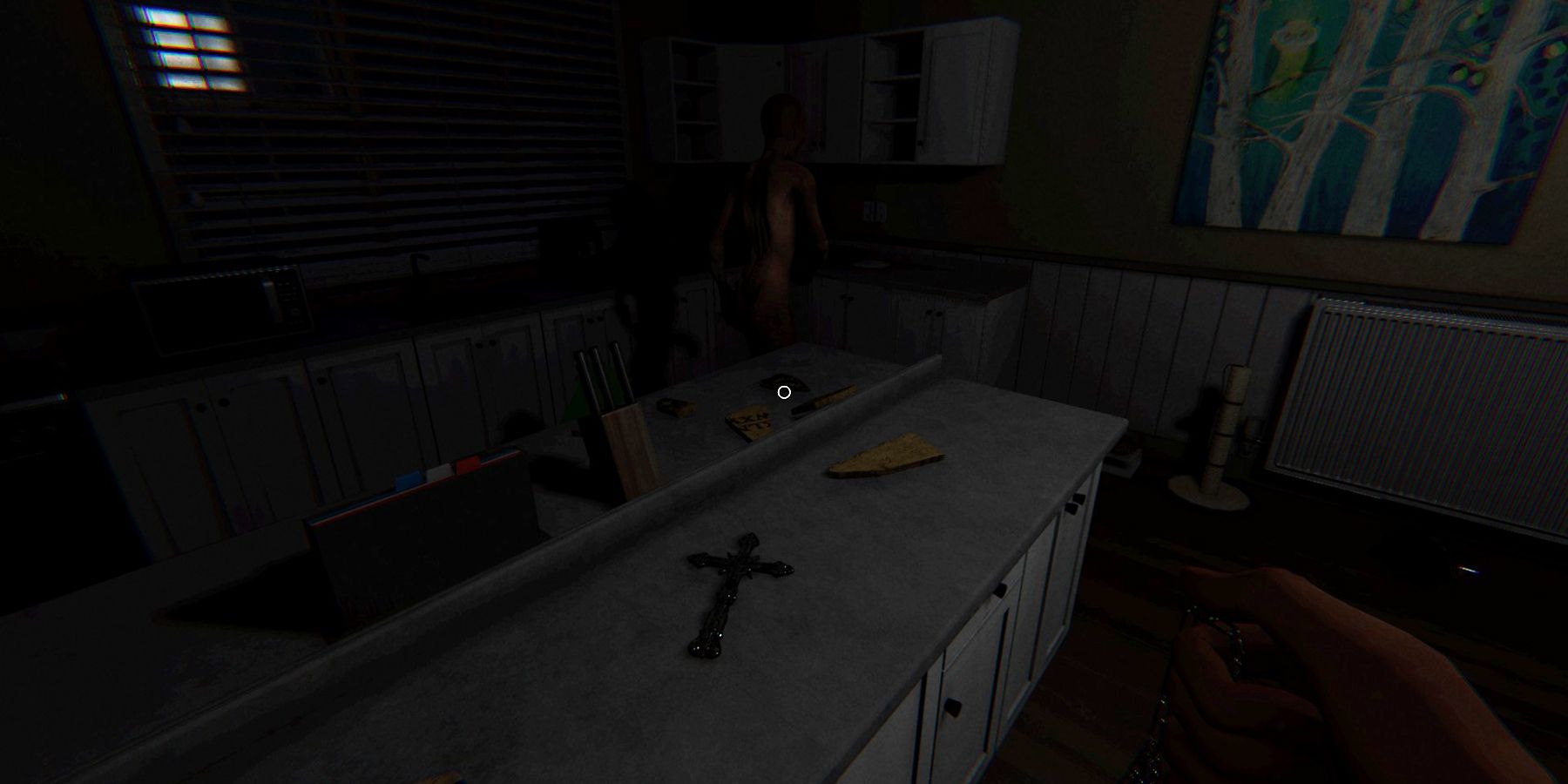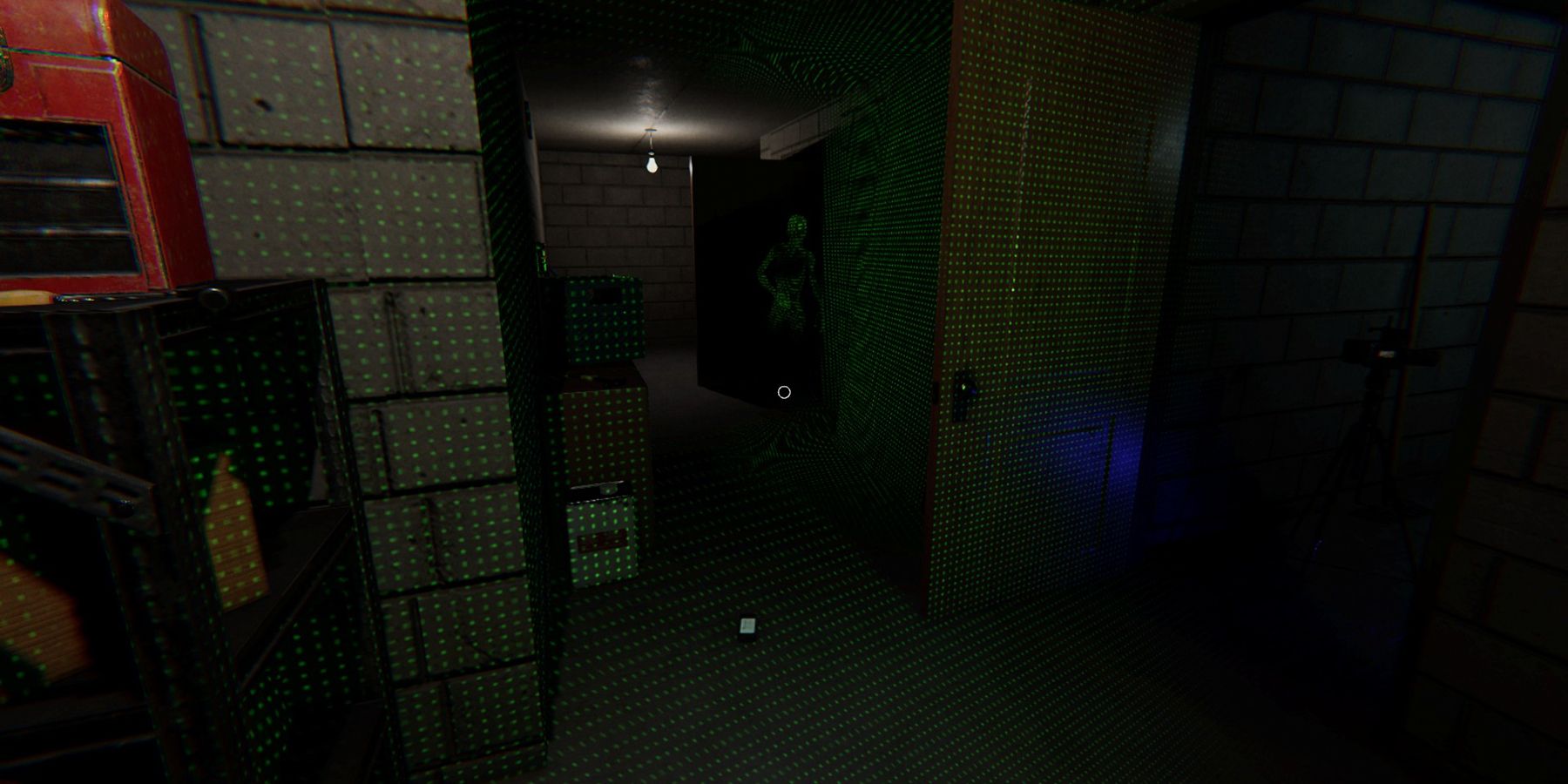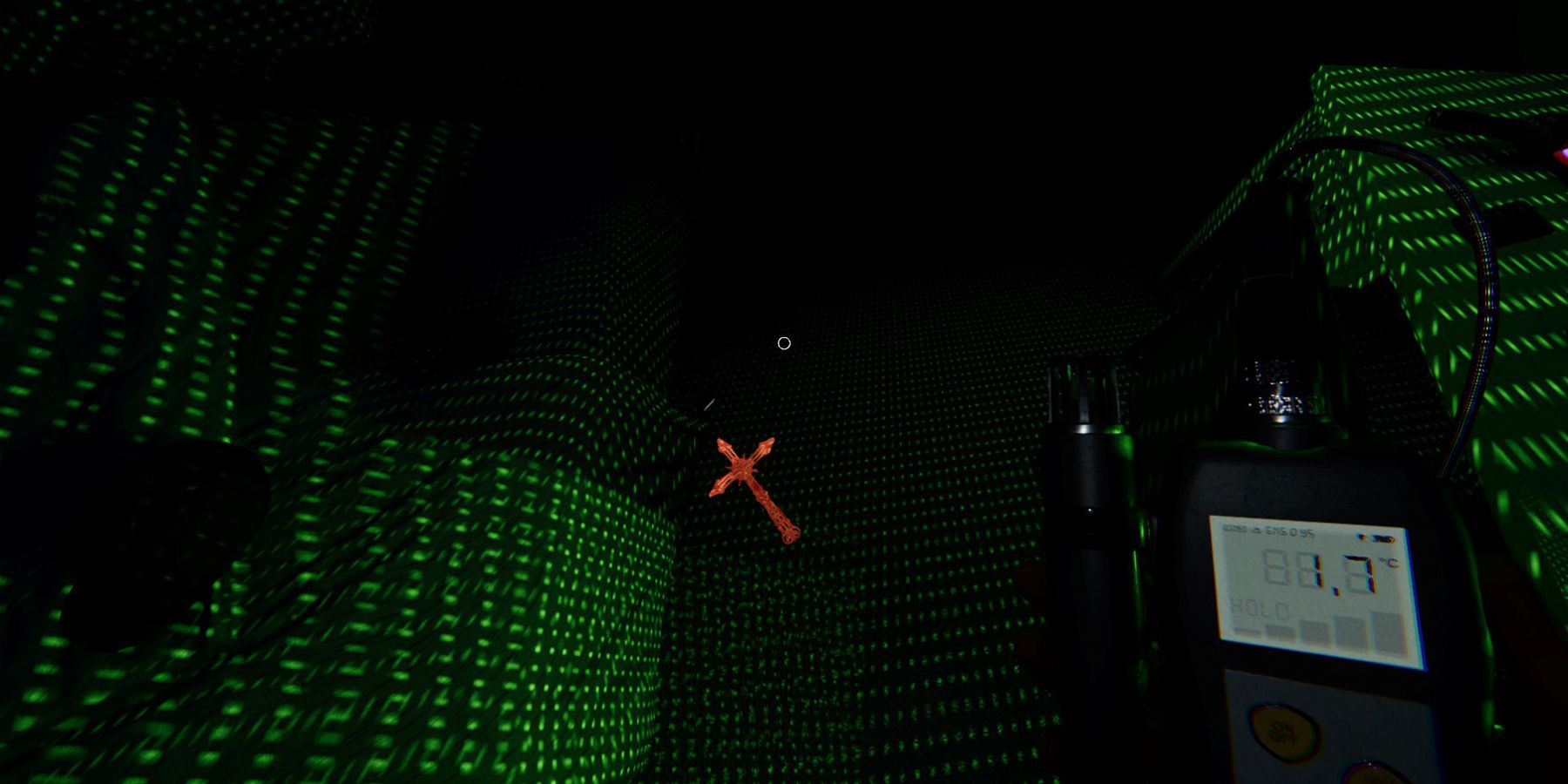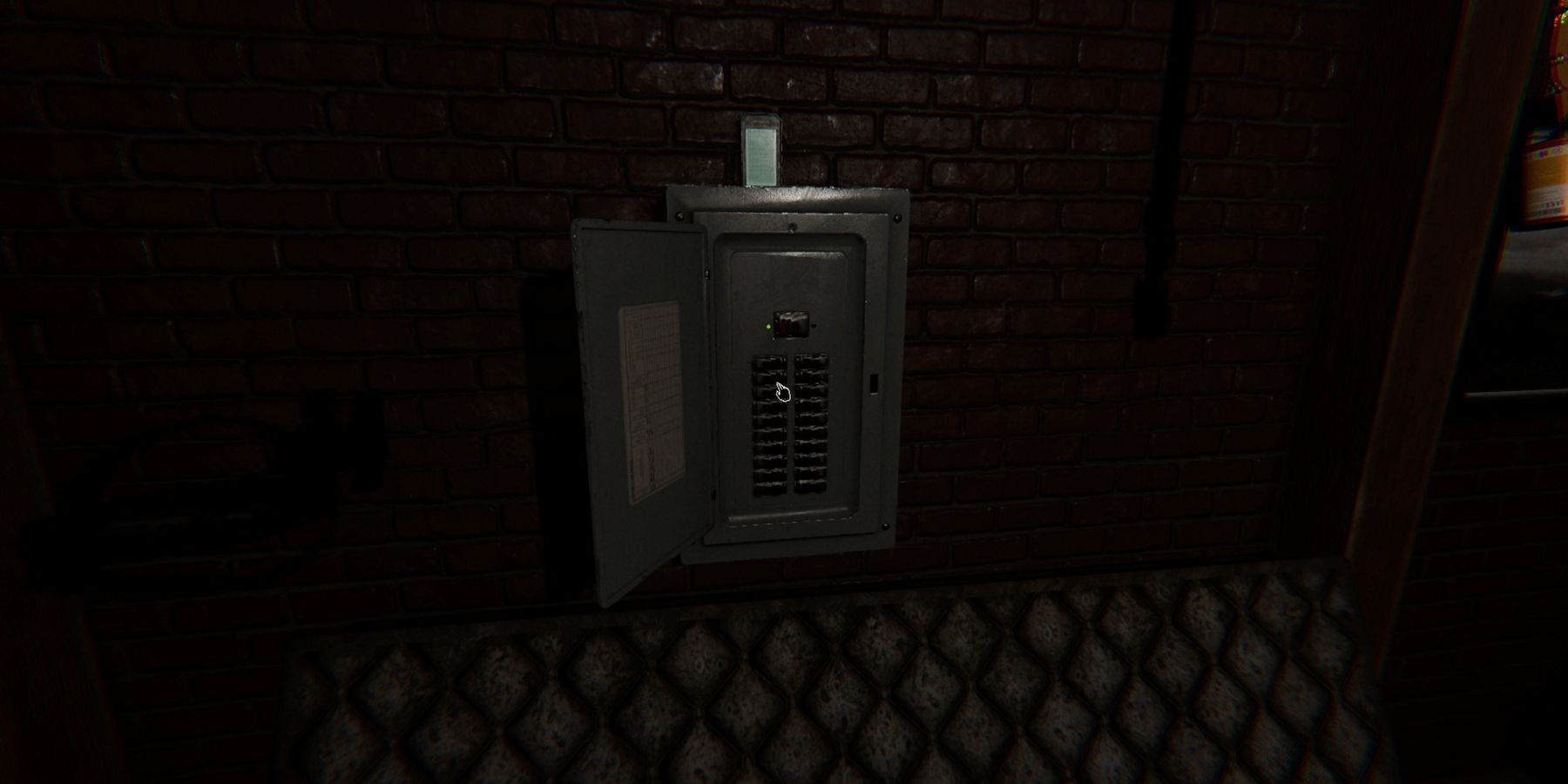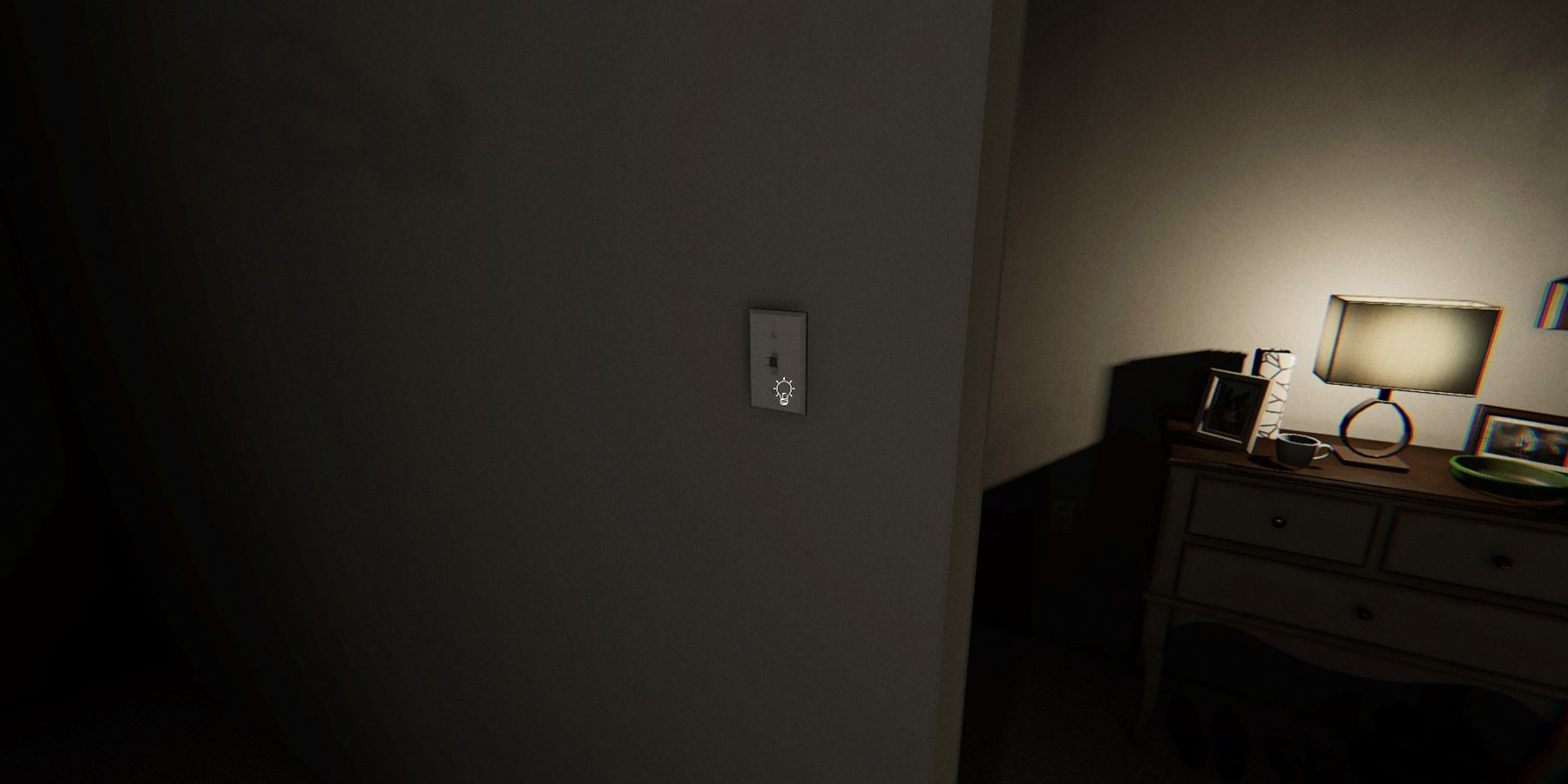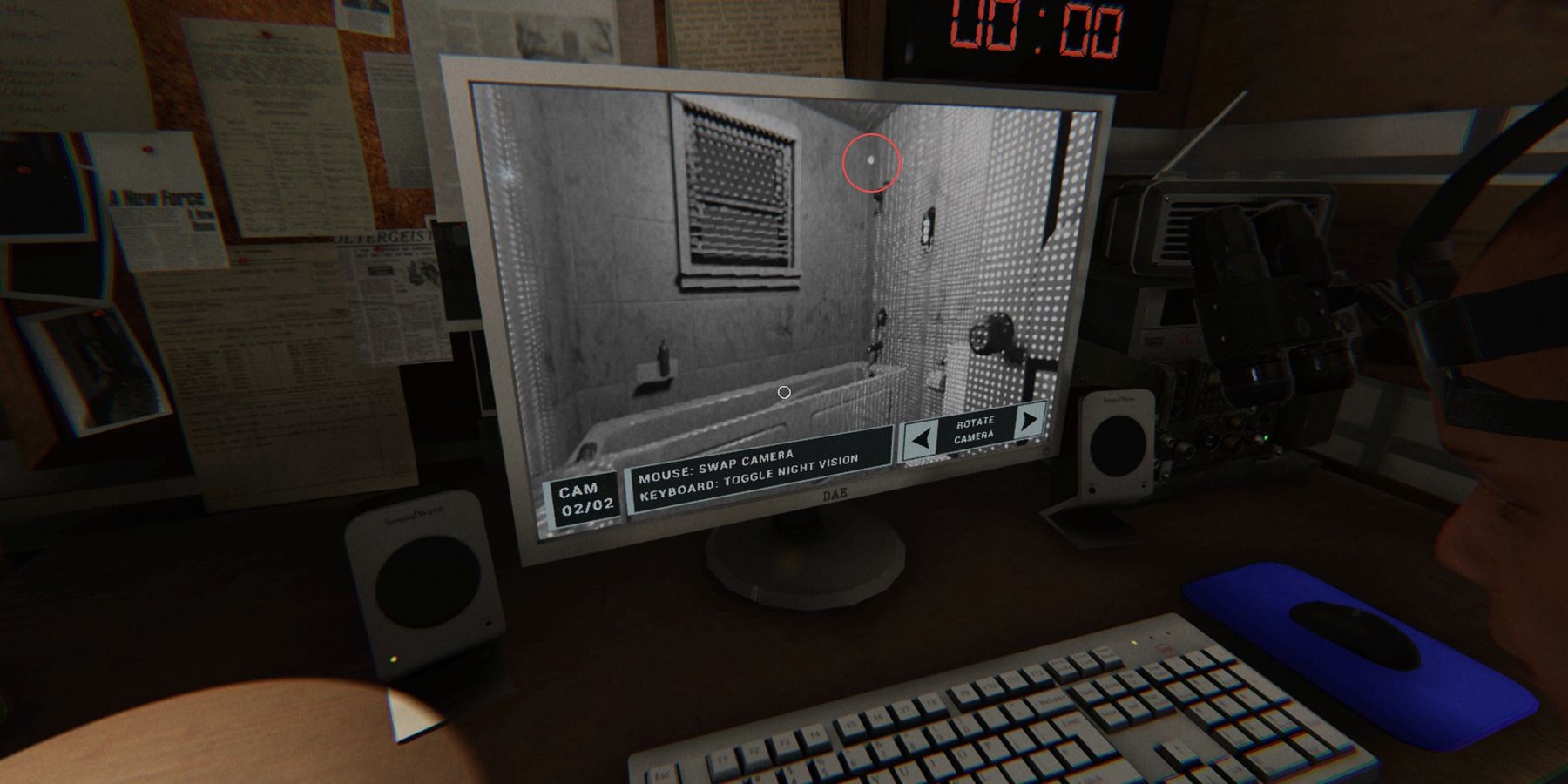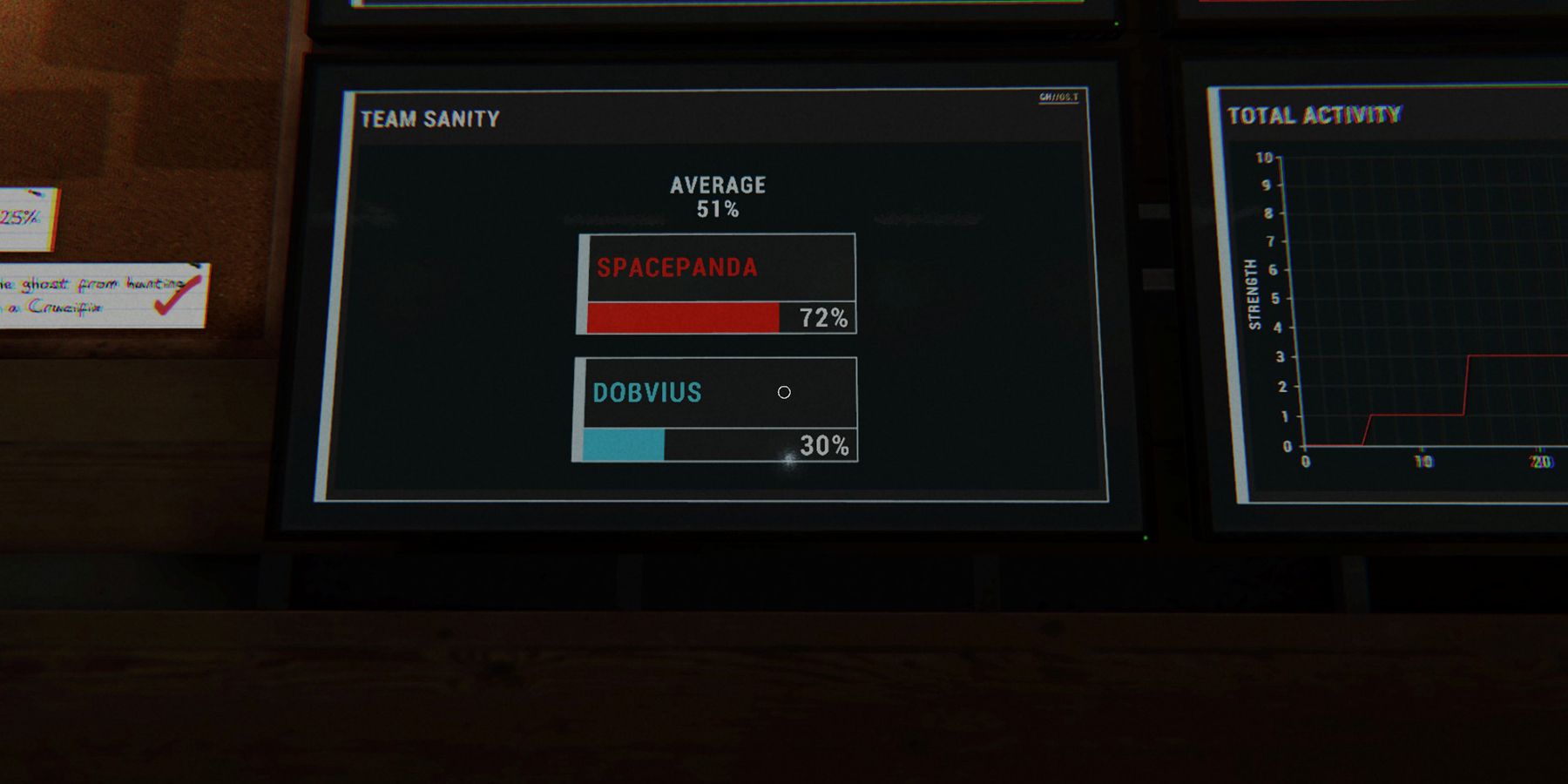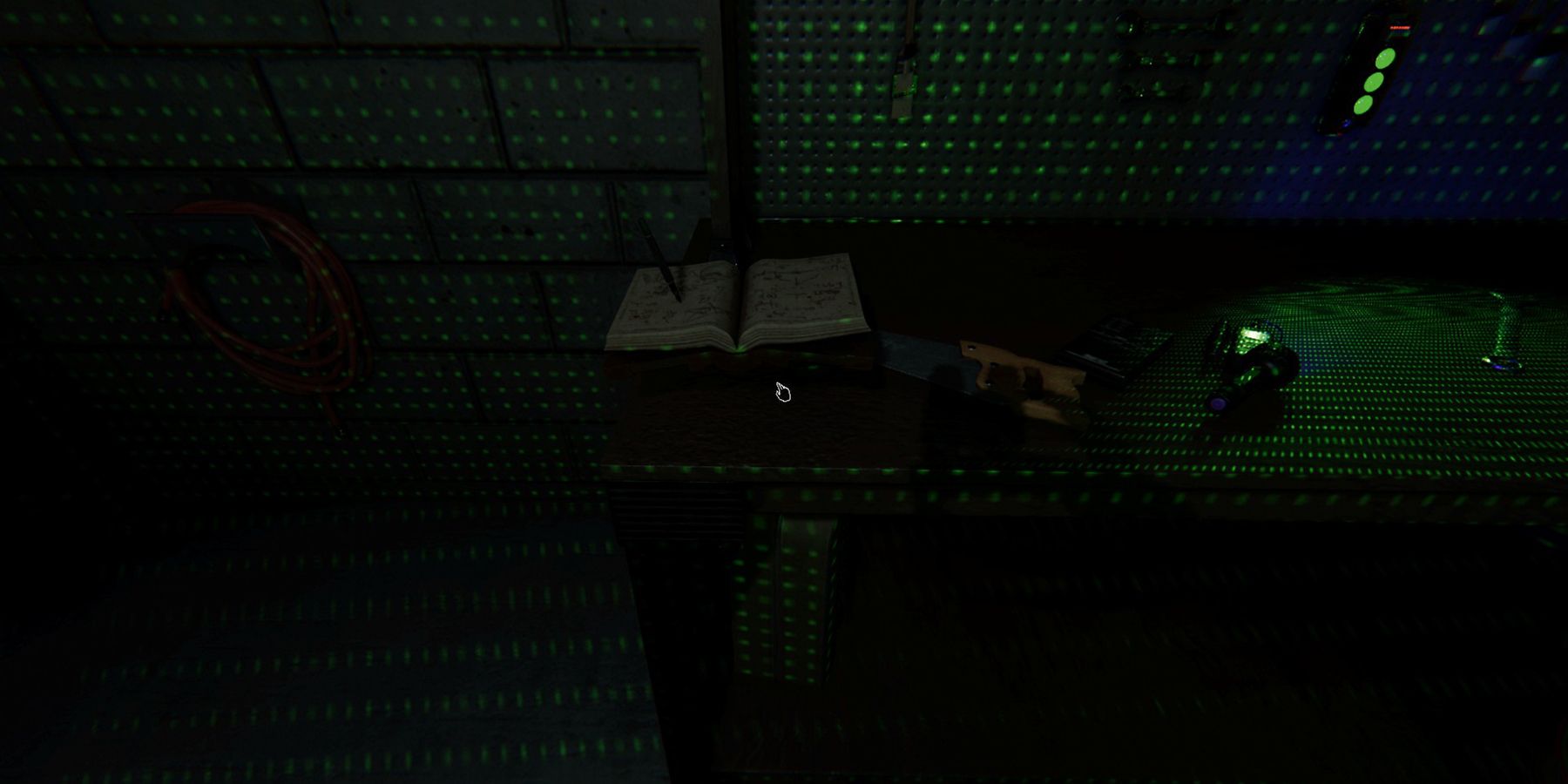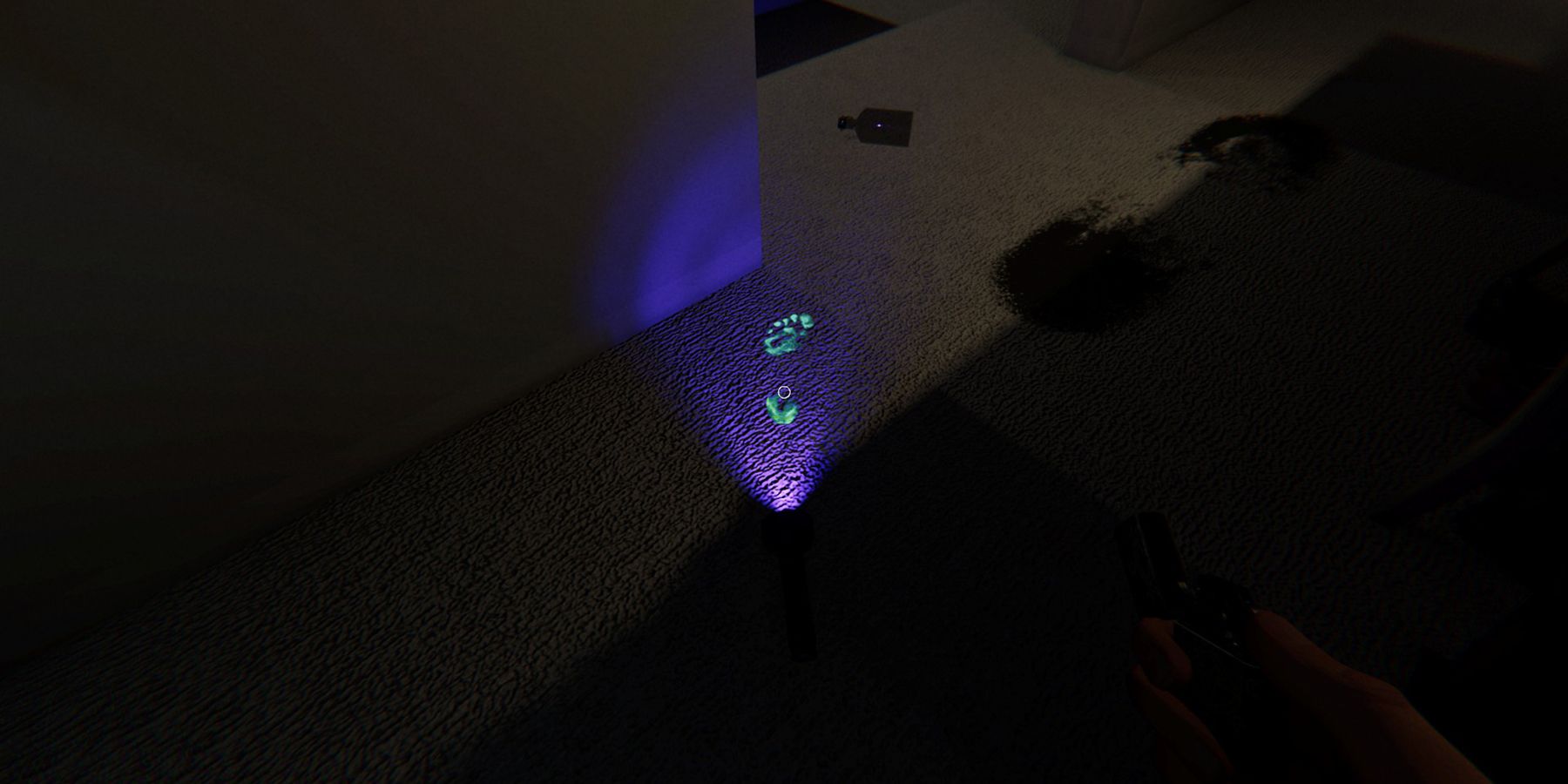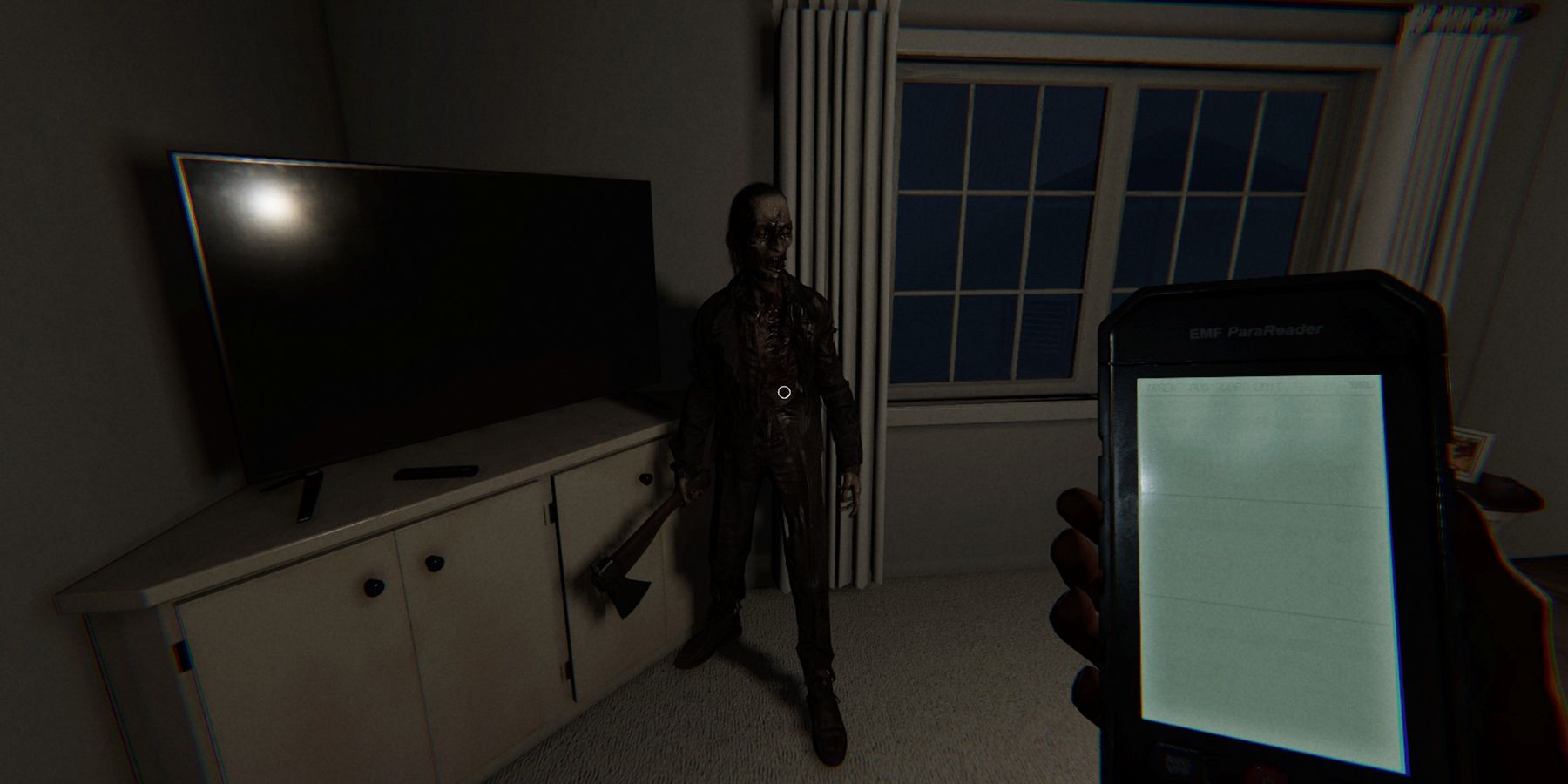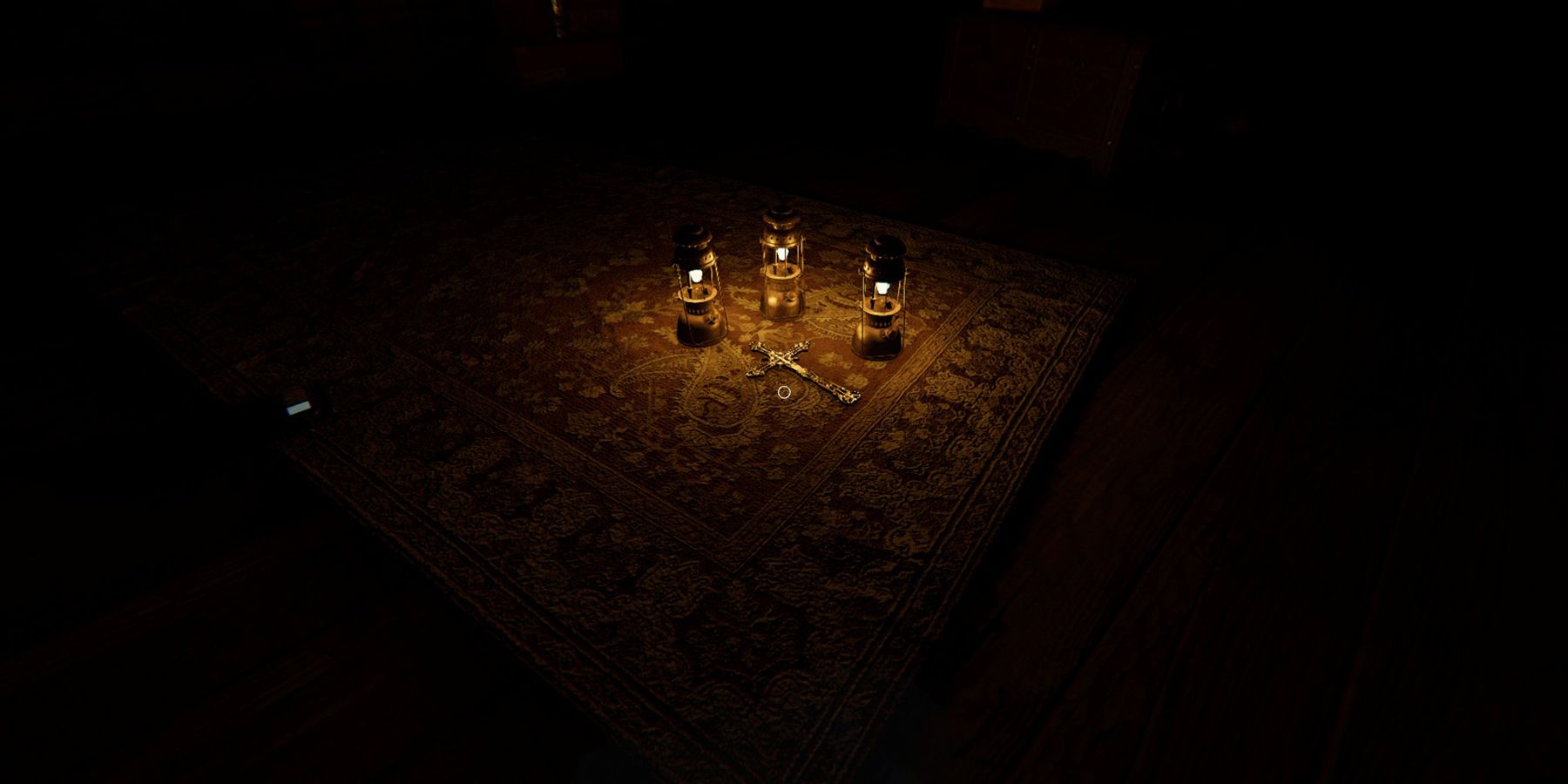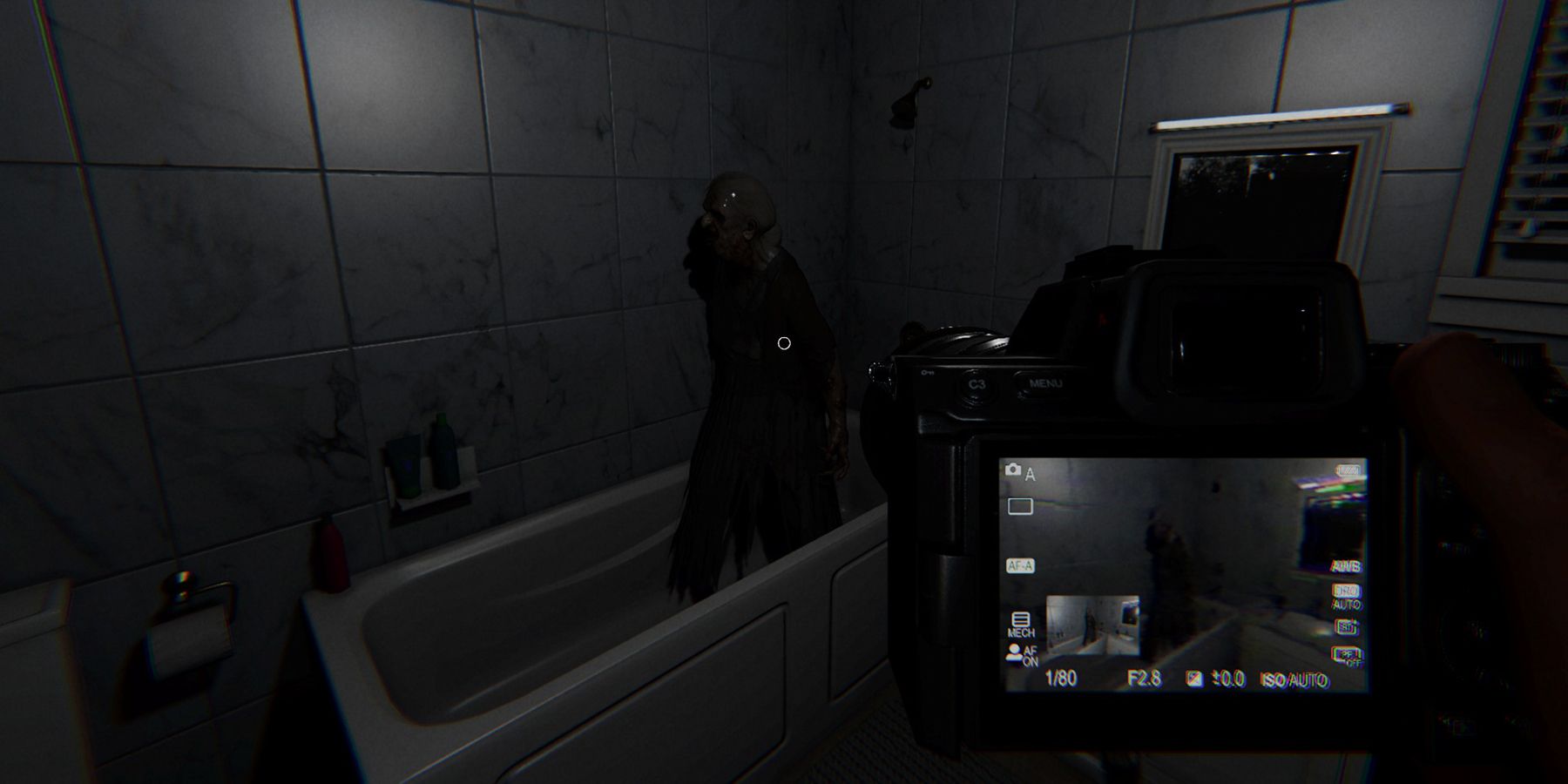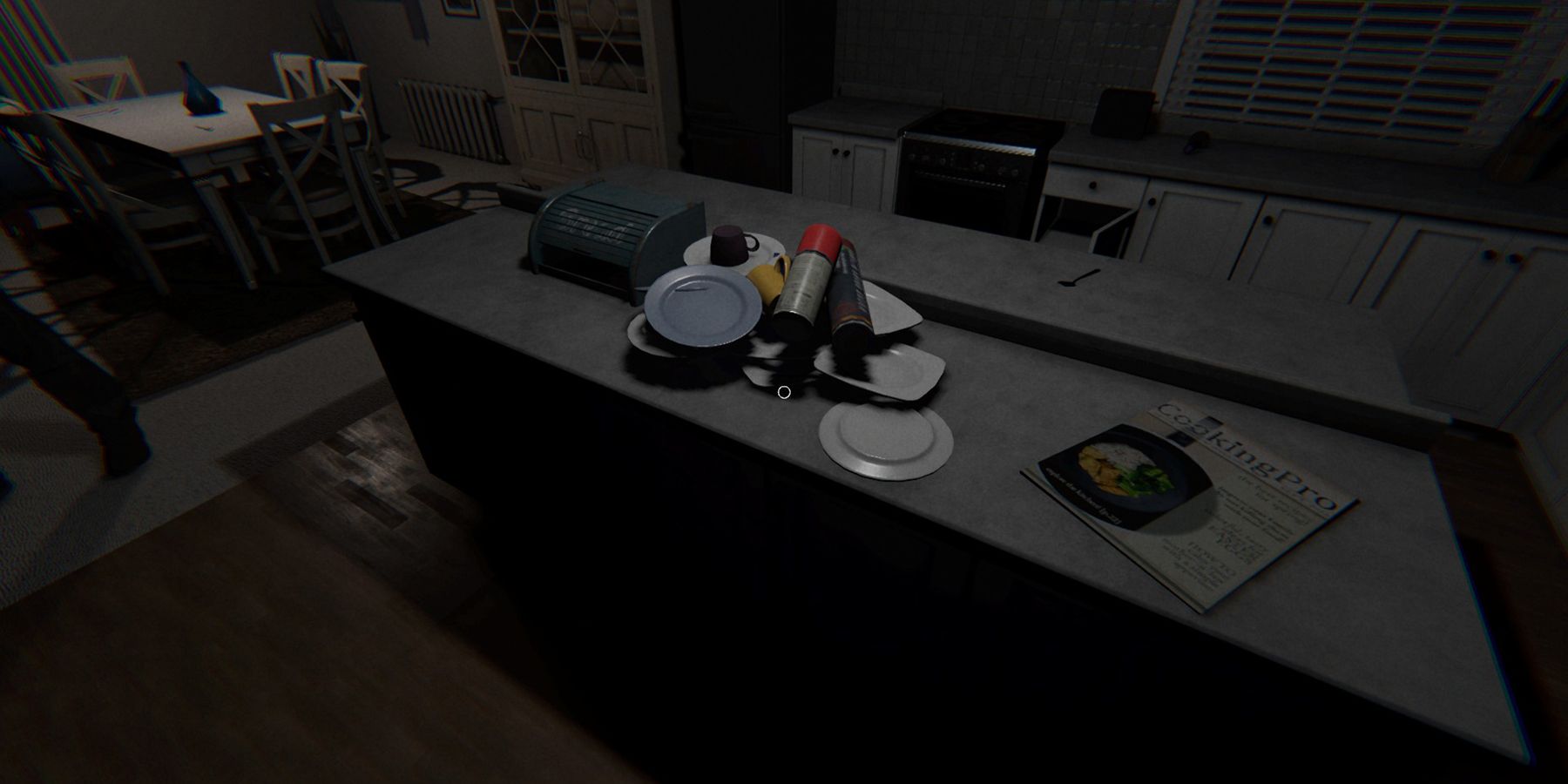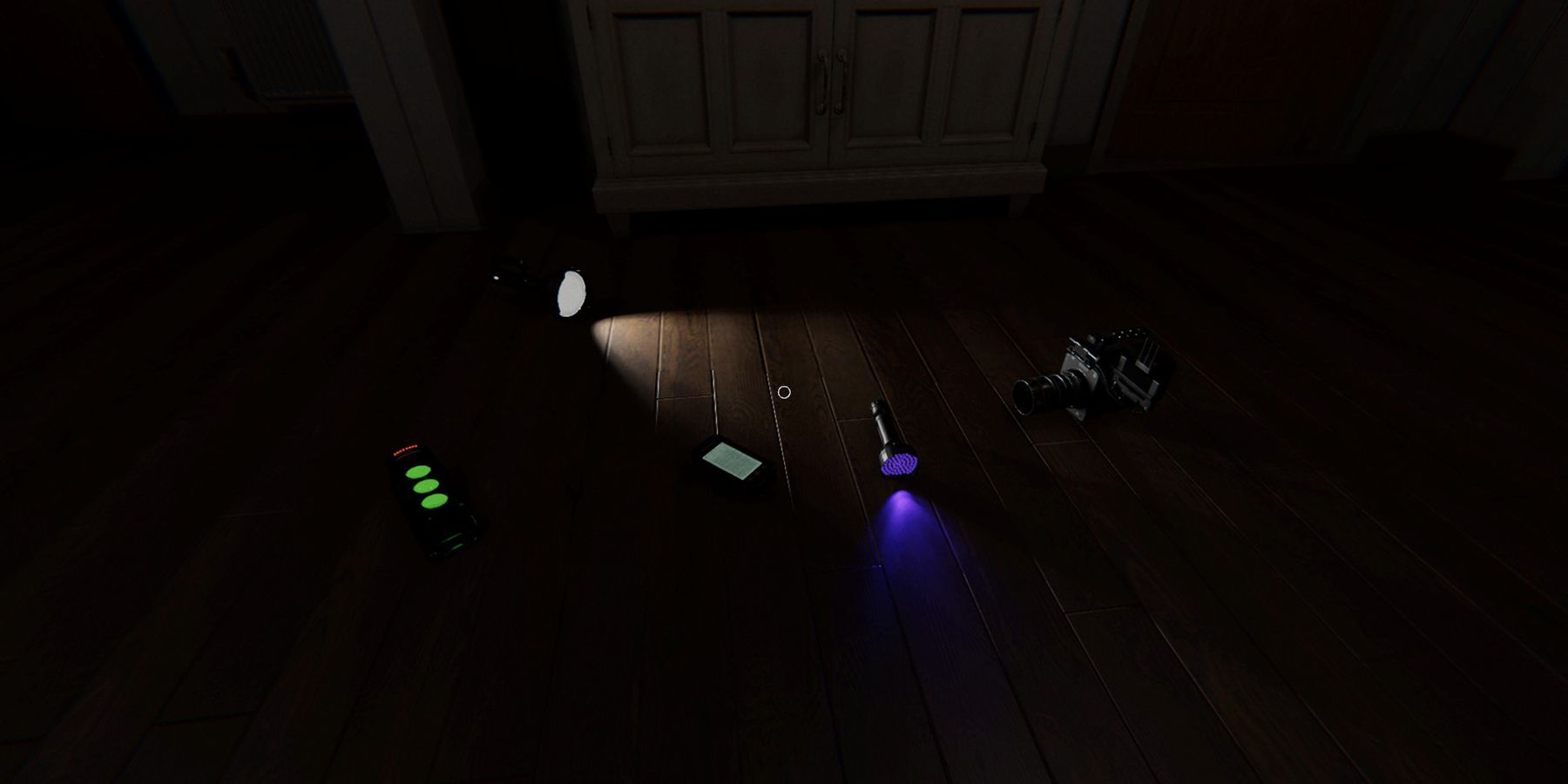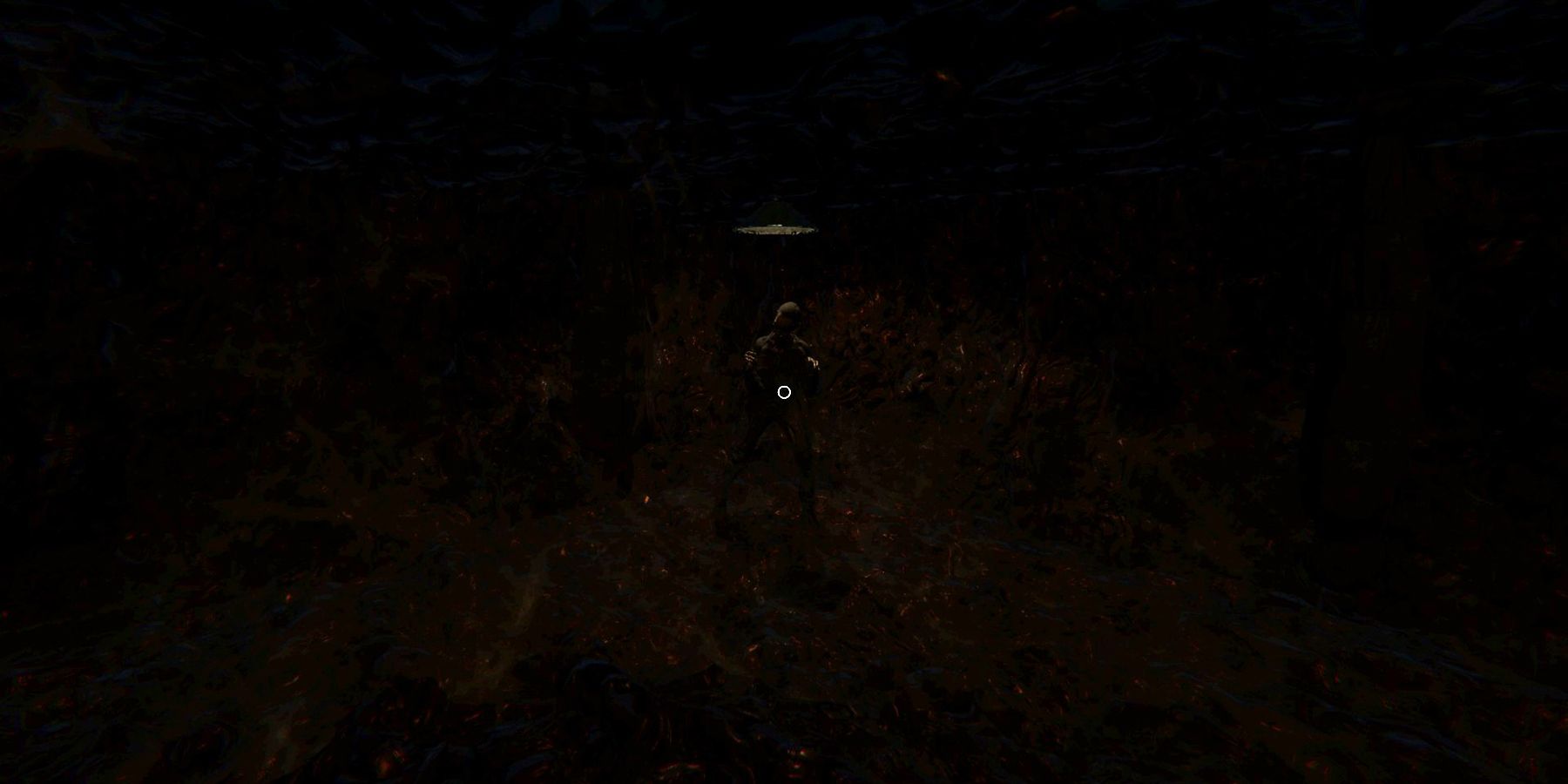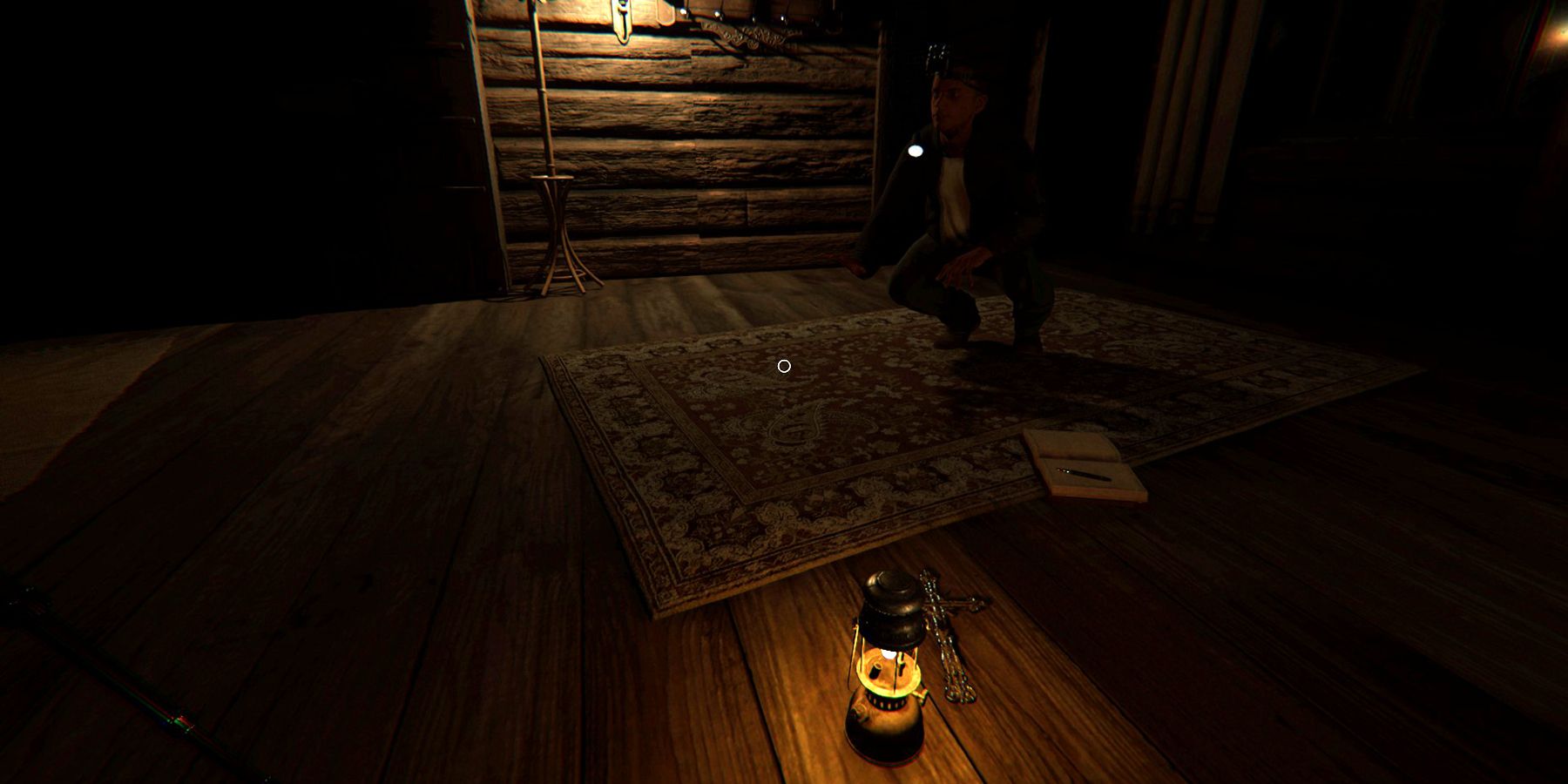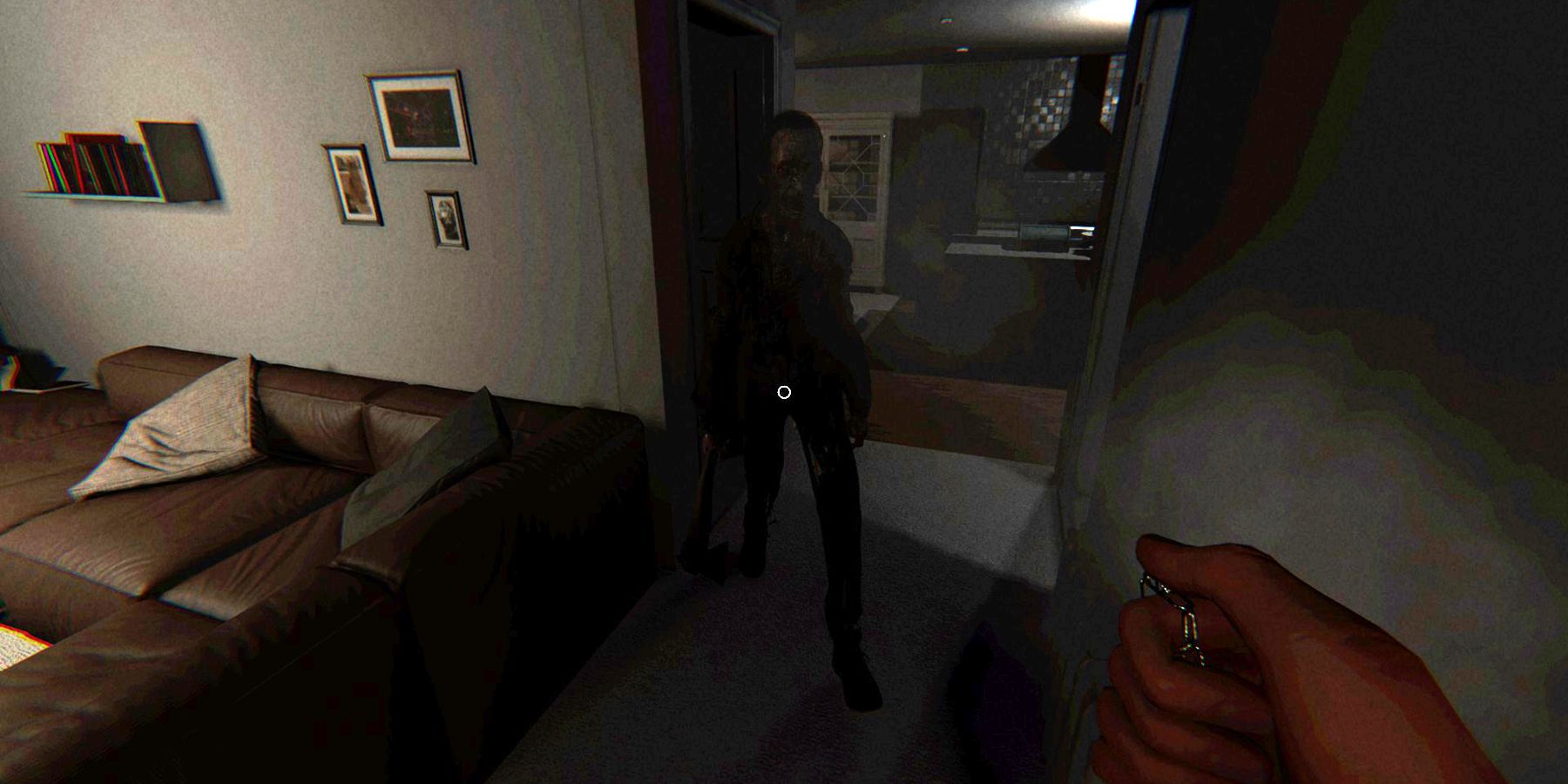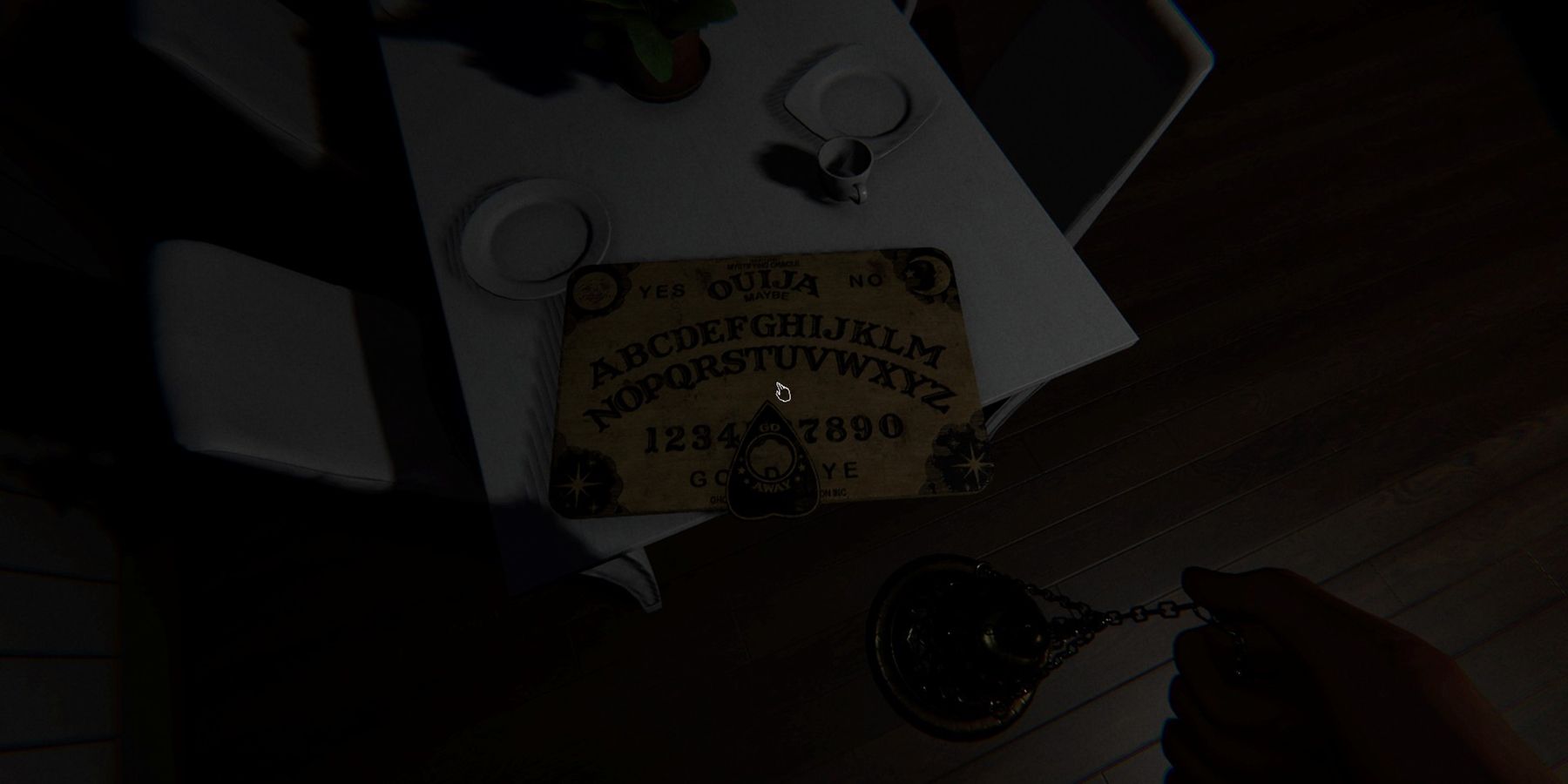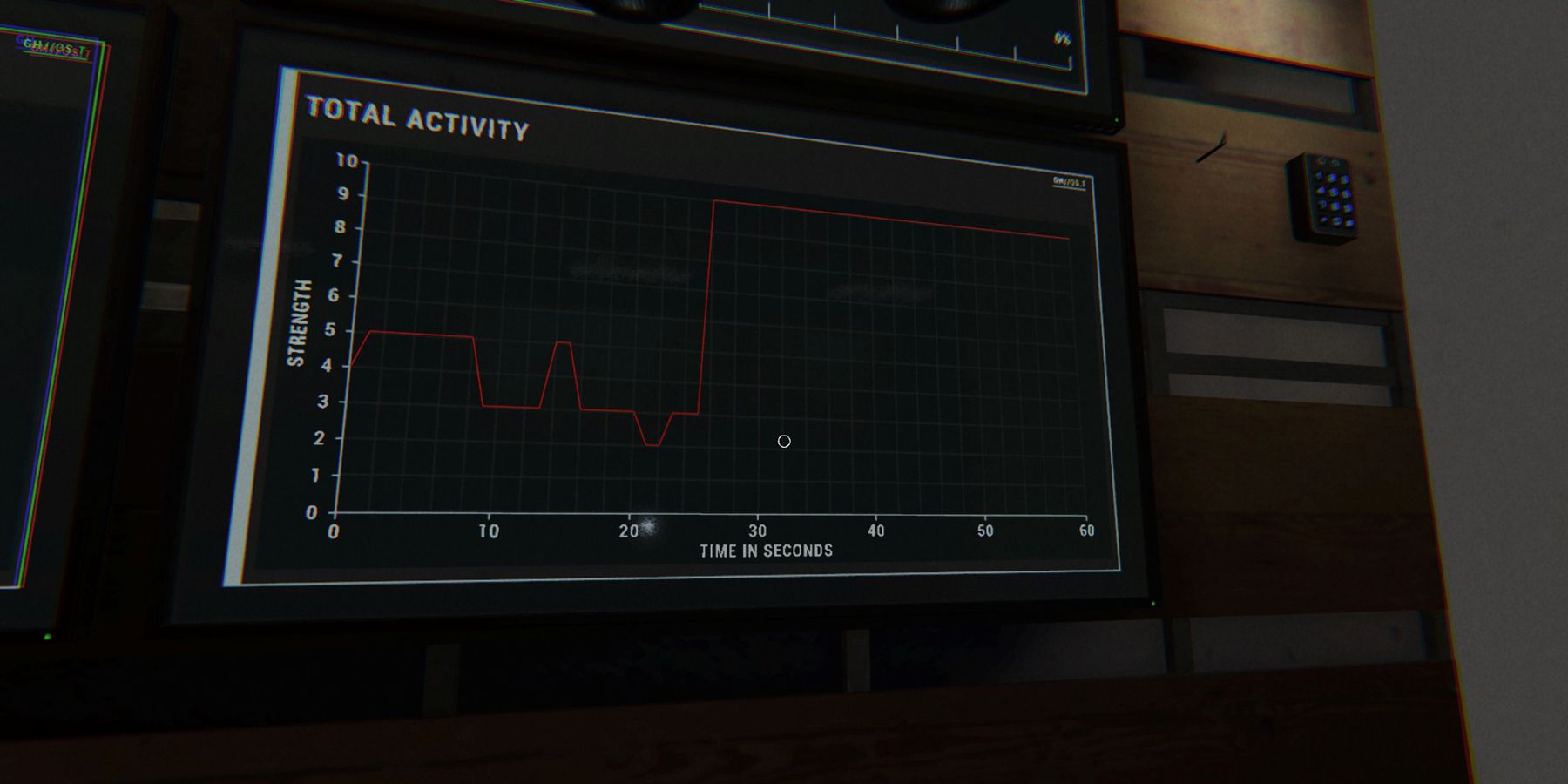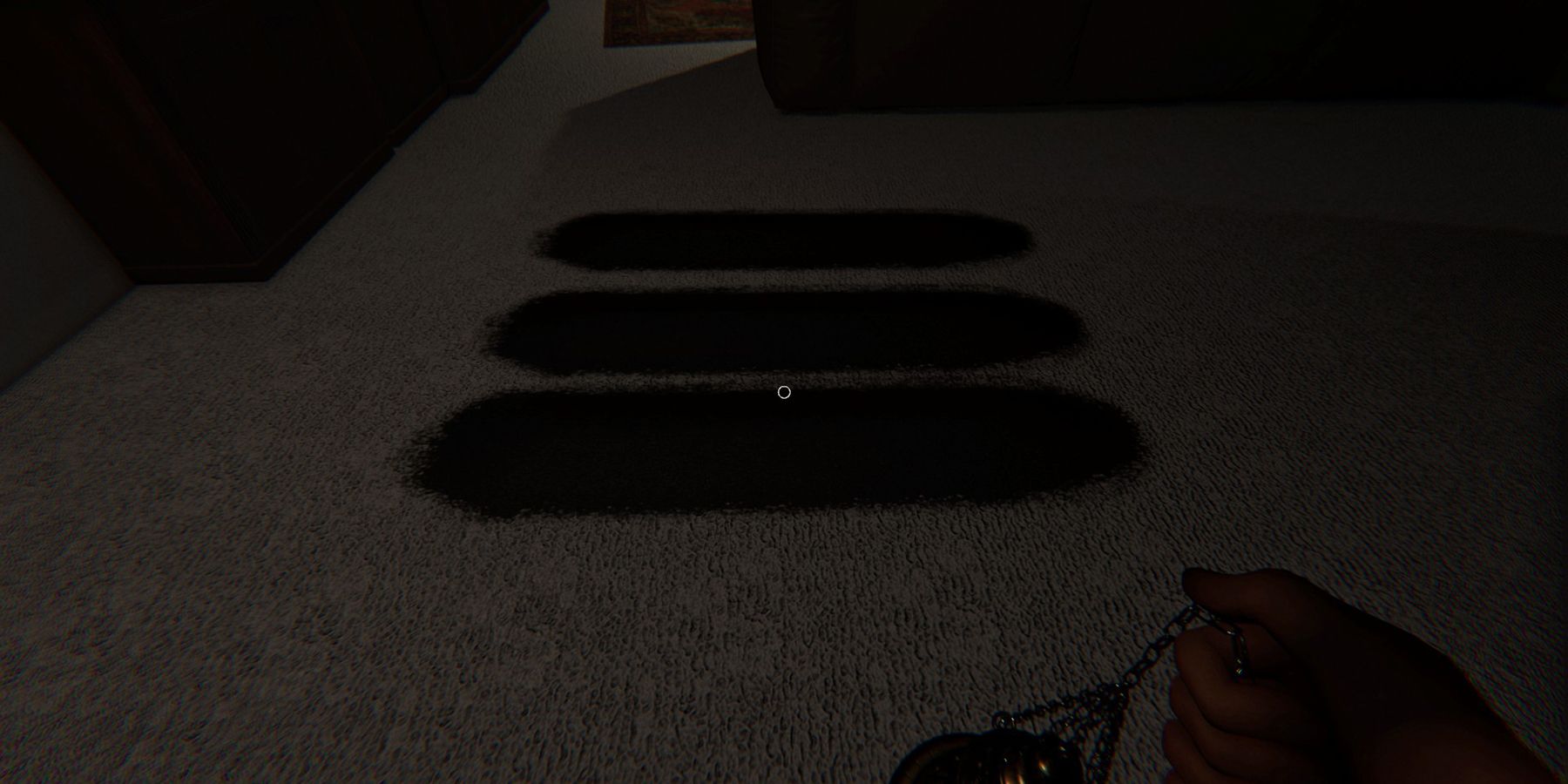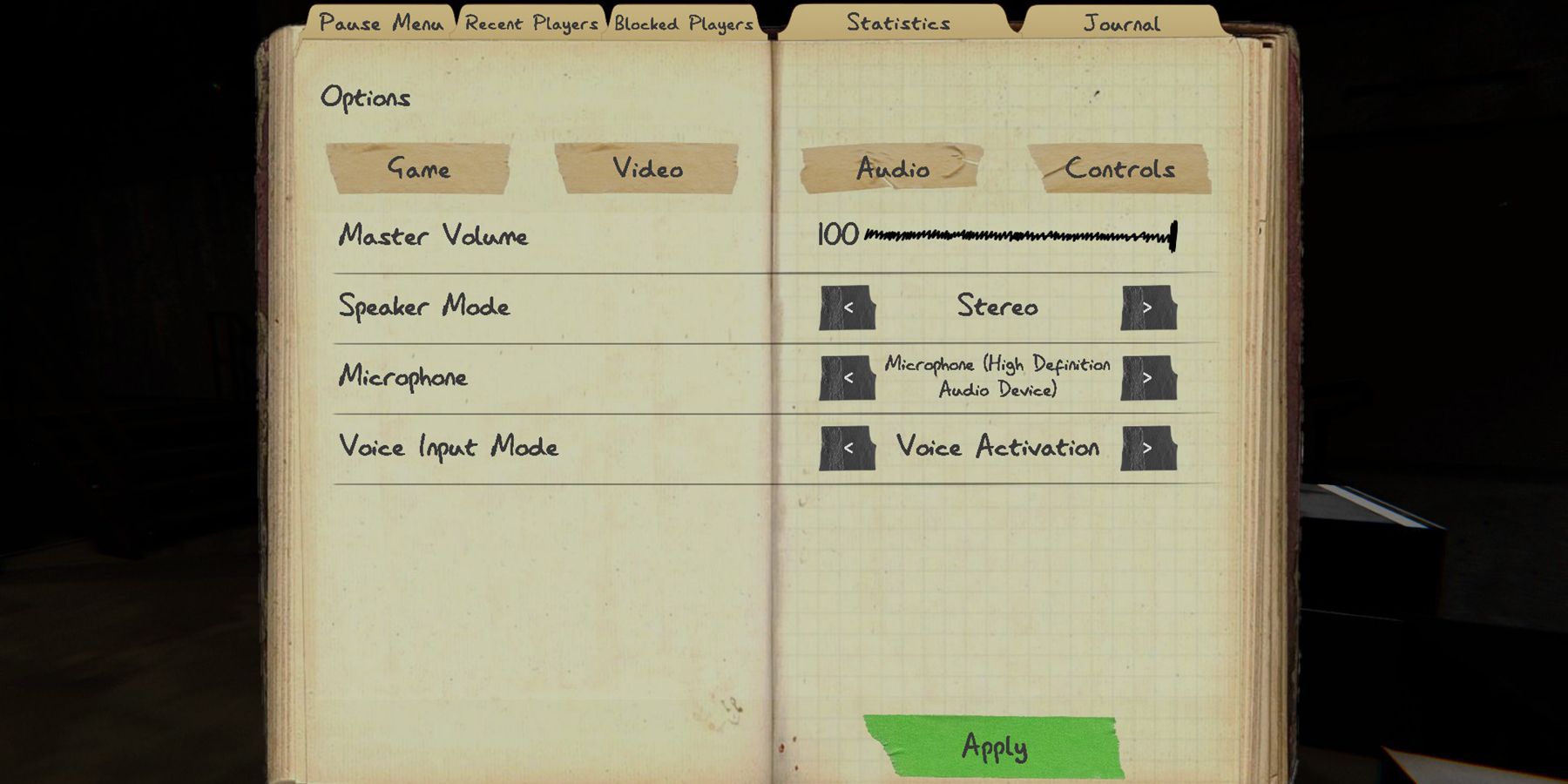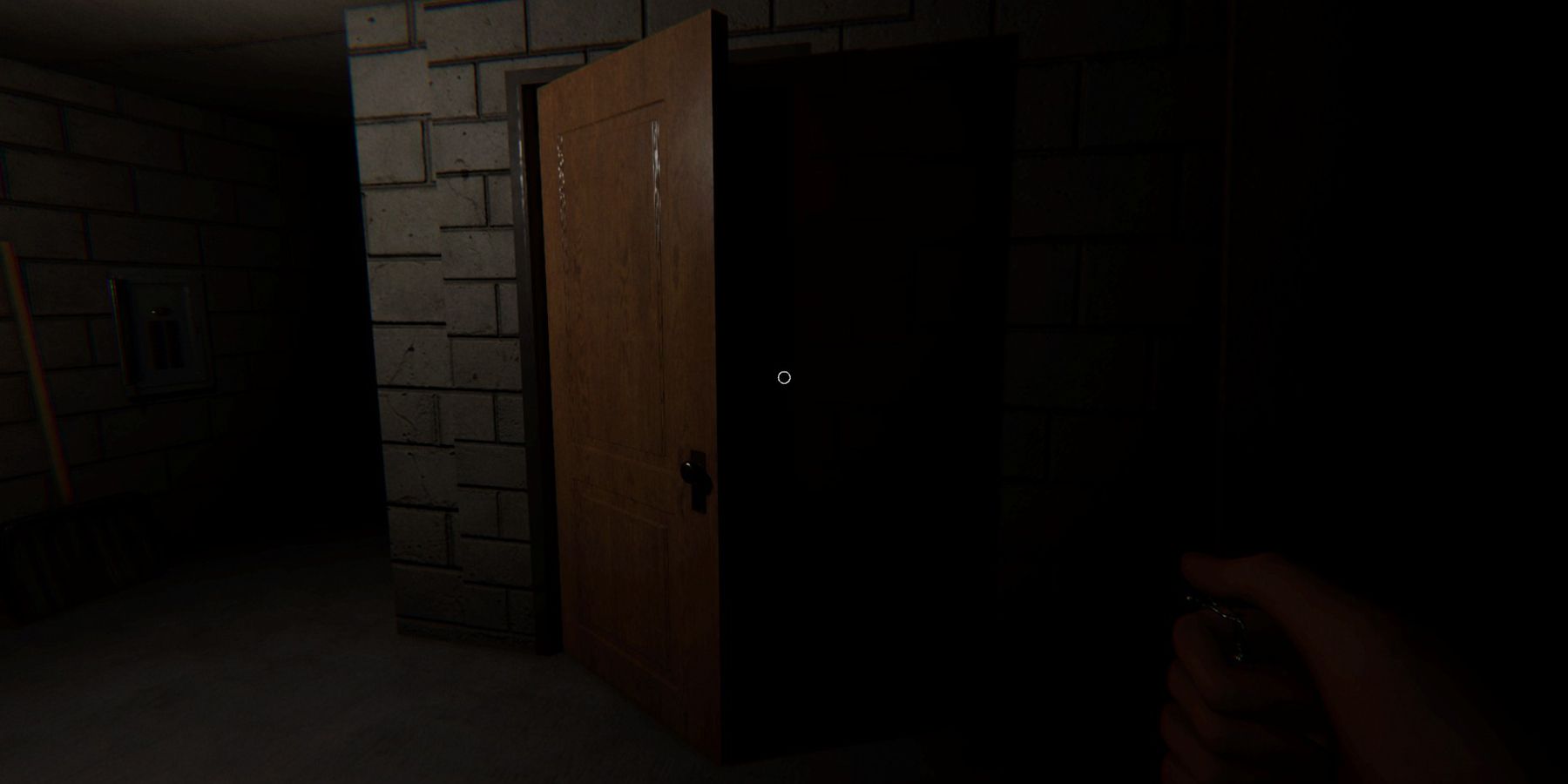Phasmophobia features 24 ghosts that each have different abilities and evidence that you can use to identify what type you’re dealing with. While certain difficulties give you three pieces of evidence to find to help identify the ghost, Nightmare and Insanity only have two and one piece of evidence respectively.
You can also challenge yourself to try and identify the ghost with no evidence at all. In this case, it’s really important to understand different ghost behaviors so you can easily figure out which one you need to pick to solve the contract. Even if you’re playing on Nightmare or Insanity, it’s going to make things much easier if you know what to look out for when you’ve found all the evidence you can. Some ghosts in Phasmophobia have abilities that are a little more obvious than others, making them easier to identify. Others, though, tend to hide behind certain tactics that you wouldn’t necessarily know from what information the game gives you in the Journal.
Banshee
- Ultraviolet
- DOTS
- Ghost Orbs
- Hunt threshold: 50% sanity (only for target)
Banshees are an interesting ghost type in Phasmophobia, because they lock onto one random player in the lobby and will only hunt that target. Literally, they will only hunt if that player is at 50% sanity or below, and they will actively ignore all other players during the hunt if their target is inside the building. Once that player is dead, though, they will switch targets.
The easiest way to identify a Banshee is to use a Parabolic Mic and listen out for their unique screech. They also tend to perform more singing ghost events.
Demon
- Ultraviolet
- Ghost Writing
- Freezing Temperatures
- Hunt threshold: 70% sanity (Any sanity when using ability)
Demons are one of the scarier ghosts because they can hunt you at any sanity. Their special ability is that they will start a hunt whenever they feel like it, even if you’re at 100% sanity. So, if you’re unlucky (or lucky, depending on how you look at it) enough to get hunted the second you open the front door, you’re probably dealing with a Demon.
Additionally, they also have a lower cooldown than other ghosts between hunts. Usually, ghosts can only trigger hunts every 25 seconds, but Demons can do so every 20 seconds. They can also trigger hunts after a shorter period of time after you smudge them. Other ghosts can only start a hunt again 90 seconds after they get smudged, whereas Demons can start a hunt after 60 seconds. Thankfully, crucifixes cover almost double the normal range for Demons compared to other ghosts, so they’re your best defense against them.
Deogen
- Spirit Box
- Ghost Writing
- DOTS
- Hunt threshold: 40% sanity
Deogens always know where you are, so you can never hide from them. They’re extremely fast if they can’t see you, but they start moving incredibly slowly when they can. As a result, Deogens are easily identified if a hunt starts because you can outwalk them, and they will always find where you are.
This ghost type also has a special sound effect, similar to a Banshee. While using the Spirit Box, there is about a 30% chance that a low growling sound will play out instead of the usual answer you get from ghosts with this type of evidence. Deogens will also always have Spirit Box as evidence, unless you’re playing No Evidence, providing another easy way to identify it.
Goryo
- EMF 5
- Ultraviolet
- DOTS
- Hunt threshold: 50% sanity
Goryos are one of the more annoying ghosts to deal with in Phasmophobia because you can miss their evidence easily. You can only see their DOTS evidence while looking at it through a camera and never while you’re physically in the room. Thankfully, DOTS is forced evidence unless you’re playing No Evidence, so if you’re dealing with a Goryo and watching your camera, you are likely to see it.
Otherwise, Goryos never change ghost rooms. This is a little more difficult to identify than it sounds, though, because they tend to roam a lot. But, if you’ve been sitting in a game with a higher difficulty for a while and the ghost never changes its favorite room, it’s probably a Goryo.
Hantu
- Ultraviolet
- Ghost Orbs
- Freezing Temperatures
- Hunt threshold: 50% sanity
There are a few ways to identify whether or not you’re dealing with a Hantu, and the first is that they cannot switch the fuse box on. They also tend to switch it off more often because their whole deal is that they like it cold. Speaking of, Freezing Temperatures is forced evidence for a Hantu, so if you’re playing on Nightmare or Insanity, you’re guaranteed to get it.
Hantu’s also have ‘ghost breath’ while they’re hunting and the fuse box is off. This essentially means that if the electricity is off when a hunt starts, you can see breath coming from the ghost while it’s walking around. Lastly, Hantu’s don’t speed up when they see you, and they tend to move slower in warmer areas of the house and faster in colder ones.
Jinn
- EMF 5
- Ultraviolet
- Freezing Temperatures
- Hunt threshold: 50%
Jinn’s are another interesting ghost type in Phasmophobia because they are the only ghost that cannot switch the fuse box off. Kind of like the opposite of a Hantu, they also tend to speed up significantly more when they see you during a hunt compared to other ghosts.
The easiest way to identify a Jinn is to put your EMF reader on the fuse box and watch it. If you get an EMF reading at any time but the electricity doesn’t actually get turned off, then it’s likely you’re dealing with a Jinn.
Mare
- Spirit Box
- Ghost Orbs
- Ghost Writing
- Hunt threshold: 40% sanity in the light/60% sanity in the dark
These ghosts are scared of the light, which is reflected by their hunt sanity threshold. If a Mare is in the dark, it can start hunting when you hit 60% sanity, and this also means it tends to switch lights off more often.
Mare’s special ability is that it can immediately switch a light off after you’ve turned it on, which is also one of the best ways to tell you’re dealing with one. If you’re playing on a higher difficulty, they also change ghost rooms more often as they seek out the darkness.
Mimic
- Spirit Box
- Ultraviolet
- Freezing Temperatures
- Hunt threshold: Any
Mimics don’t have their own special abilities, aside from the fact that they take on the behavior of other ghosts in Phasmophobia. As such, it can be really difficult to identify if you’re dealing with one.
They will always, however, produce Ghost Orbs. This means that if you see Ghost Orbs as evidence, it’s best to check if any other of the Mimic’s evidence is present. If you get four types of evidence, then it’s a Mimic. Otherwise, if you’re playing on lower evidence difficulties, it can be easier to identify because Ghost Orbs will appear for these ghosts, even if you’re playing on No Evidence.
Moroi
- Spirit Box
- Ghost Writing
- Freezing Temperatures
- Hunt threshold: 50% sanity
The Moroi is the scariest ghost in Phasmophobia if you struggle to manage your sanity, because they speed up significantly in hunts as your sanity lowers. They also have forced Spirit Box evidence, like the Deogen, because if you hear them, you get cursed.
The cursed player will lose sanity a lot quicker than normal, which is also the easiest way to check if you’re dealing with a Moroi. Listen to its sounds through a Parabolic Mic or speak with it through the Spirit Box, then take note of your current sanity. Sit in the dark for a bit, and if it drops drastically, it’s likely a Moroi. This is also easier when you can compare sanity loss with another player.
Myling
- EMF 5
- Ultraviolet
- Ghost Writing
- Hunt threshold: 50% sanity
A Myling acts like a pretty normal ghost, but its real strength is that you won’t hear it coming. These ghosts are incredibly quiet if they’re not right next to you, making it a fairly simple one to identify. All you need to do is find a good hiding spot and listen while it hunts. If you can’t hear it outside when it’s in the same room, it’s probably a Myling.
You can also check for this ghost type using the Parabolic Mic, because it tends to make more ghost noises than others. This can be random, though, so it’s not as solid as listening out for its footsteps and spooky noises while it hunts.
Obake
- EMF 5
- Ultraviolet
- Ghost Orbs
- Hunt threshold: 50%
The Obake is the shapeshifter, the one who will change form while it hunts and leave strange-looking handprints. If you’re playing in a mode with evidence, then Ultraviolet is forced with Obake, and sometimes, it’ll leave a handprint with six fingers or a thumbprint with two thumbs. This is the best way to check for this ghost, unless you’re playing on No Evidence.
Without evidence, you’re going to need to watch it while it hunts, because it changes ghost models while it’s hunting. For example, it can start out as the creepy baby ghost, switch to the big man with the axe, then switch back to the baby ghost. It happens very quickly, though, so you need to have your wits about you.
Oni
- EMF 5
- Freezing Temperatures
- DOTS
- Hunt threshold: 50%
Oni’s will try and scare you to death before it actually tries to physically kill you. This ghost does a ton more ghost events than others, but interestingly, it cannot do the ‘airball’ event. This is the one where you can see a ghost-like ball traveling through the air before it hits you, and when it does, you hear a ‘haaa’ type of sound effect.
When Oni’s hunt, they also tend to blink faster than other ghosts, which is another way you can tell that you’re dealing with one. It tends to be a lot more active when players are around, so you’re going to have to be inside a lot more to identify the Oni in these ways.
Onryo
- Spirit Box
- Ghost orbs
- Freezing Temperatures
- Hunt threshold: 60% sanity (any if firelights are blown out)
Onryo is one of the easiest ghosts to identify in Phasmophobia, because it has a very secure test you can do. Take three firelights, light them, and put them next to a crucifix in the ghost room. If all three firelights are blown out and the ghost hunts immediately after, you’re dealing with an Onryo.
Ironically, firelights are also your best defense against Onryos, because they cannot hunt if a fire is lit nearby. This includes campfires on maps like Camp Woodwind, so just be wary of lighting these when you’re dealing with one.
Phantom
- Spirit Box
- Ultraviolet
- DOTS
- Hunt threshold: 50% sanity
This is a tricky ghost to deal with while they’re hunting, because they’re very difficult to keep track of. Phantoms have very long blinks, meaning that you can’t see where they’re going half of the time, but it’s also the easiest way to identify them.
They also don’t show up in pictures. If you take a photo of a Phantom at any point, then the picture in the journal will count as a three-star ghost photo even though the ghost doesn’t appear in it. If you take the photo during a ghost event, the ghost will disappear immediately, but you may still hear the sounds it’s making during the event.
Poltergeist
- Spirit Box
- Ultraviolet
- Ghost Writing
- Hunt threshold: 50% sanity
Poltergeists love throwing things. In fact, they can throw individual items much further than other ghost types, and they can throw multiple items at once. If they do the latter, be careful, because your sanity will start draining faster.
The best way to identify these ghosts (and arguably the most fun) is to grab items from around the house and stack them in a pile in the ghost room. If the pile explodes in all directions, then you’re no doubt dealing with a Poltergeist. Otherwise, just be aware of whether or not the ghost is particularly inclined to throw things everywhere while it hunts.
Raiju
- EMF 5
- Ghost Orbs
- DOTS
- Hunt threshold: 65% sanity (in the presence of electronic equipment)
These ghosts can be pretty scary around electronics, because they’ll speed up significantly while hunting if any are nearby. Thankfully, it makes for an easy way to identify them. Turn on electronics like DOTS Projectors, cameras, and flashlights, throw them near the ghost room, then hide and listen for the ghost’s speed. If it speeds up around that area and then slows down to normal, it’s likely a Raiju.
Just be careful, though, because they hunt early when you have electronics nearby. As mentioned, they’re pretty fast, so just have incense ready for when the hunt starts.
Revenant
Revenants are probably the scariest ghosts to deal with in Phasmophobia because if they spot you, you’re dead. They’re incredibly slow if they don’t see you, but they get really fast when they do. They’re pretty much the opposite of Deogens in this way, and thankfully, they don’t instinctively know where you are, like Deogens.
So, this is the best way to identify them. If you’re hiding and the ghost is painfully slow while it’s hunting, it’s probably a Revenant. Just don’t stick your head out, as it will catch you.
Shade
- EMF 5
- Ghost Writing
- Freezing Temperatures
- Hunt threshold: 35% sanity
Shades are shy ghosts, as they won’t do anything while you’re in the same room with them. They won’t interact with anything, and they certainly won’t hunt. The easiest way to tell if you’re dealing with a Shade is to sit in the ghost room with a lit firelight and wait for the ghost to blow it out. If this never happens, then you’re probably dealing with a Shade.
If you’re feeling a little brave, you can also take a crucifix and sit in the room while it’s dark to kill your sanity. If the ghost never hunts while you’re in the room, then it’s your cue that it’s definitely a Shade.
Spirit
- EMF 5
- Spirit Box
- Ghost Writing
- Hunt threshold: 50% sanity
This ghost type is a little milquetoast, as they have no particularly special abilities like the others. They have a normal sanity hunt range, and it’s quite difficult to tell whether you’re dealing with one when you’re playing on lower evidence difficulties.
The best way to know if the ghost is a Spirit is to incense it while it’s hunting, then sit with a timer and wait for another hunt to start. Unlike other ghosts, Spirits can only hunt again after three minutes instead of the usual 90 seconds if they’ve been incensed. Be sure to do this test a couple of times, though, because some ghosts just don’t feel like hunting sometimes, and you could get tricked.
Thaye
- Ghost Orbs
- Ghost Writing
- DOTS
- Hunt threshold: Up to 75% sanity
If you are hunted at a really high sanity, you haven’t found the ghost room, and the ghost is extremely fast, you’re dealing with a Thaye. They have an interesting mechanic where they age the longer you’re in the room with them, and their speed while they hunt is directly proportional to how old they are.
Having a Ouija Board as your cursed possession is one of the best ways to figure out a Thaye. At the beginning of the game, you can use the Board to ask the ghost how old it is. Then, go sit in the ghost room for a while, and ask it again. If the age changes, it’s a Thaye. Otherwise, you can start multiple hunts in between sitting in the ghost room and listening out for whether its speed changes.
The Twins
- EMF 5
- Spirit Box
- Freezing Temperatures
- Hunt threshold: 50% sanity
The Twins interact with objects a lot more than other ghost types in Phasmophobia, as they’re essentially two ghosts in one. Thankfully, there won’t be two ghosts to deal with while they hunt, but there are a few ways you can tell whether you’re dealing with them.
Firstly, each Twin has a different speed at which they hunt. So, if one hunt the ghost is slightly faster and the next it’s slightly slower, it’s probably Twins. You can also keep an eye on the activity monitor in the van to look out for ‘Twinteractions,’ which essentially is a little blip on the red line that indicates they have interacted with something at the same time. Be careful, though, because they can manifest outside the ghost room when they start a hunt – making it a bit difficult to keep track of them.
Wraith
- EMF 5
- Spirit Box
- DOTS
- Hunt threshold: 50% sanity
Wraiths are a teleporting type of ghost that can manifest right next to you when they start to hunt, so while they’re fairly easy to identify, they’re also quite dangerous. To check if you’re dealing with a Wraith, throw a ton of salt down on the floor in the ghost room. If it never gets walked through, then it’s a Wraith.
Yokai
- Spirit Box
- Ghost Orb
- DOTS
- Hunt threshold: 80% sanity (when using voice chat nearby)
If you’re dealing with a Yokai, then you will want to try and be as quiet as possible. These ghosts get pretty angry when players talk around them using the voice chat in-game, increasing the likelihood of them hunting and interacting with objects the more noise you make.
Interestingly, though, their hearing range is really short when they are hunting. This means that you can stand in a separate room and call out to the Yokai, and if it doesn’t immediately chase you down, you’ve successfully identified the ghost.
Yurei
- Ghost Orbs
- Freezing Temperatures
- DOTS
- Hunt threshold: 50% sanity
A Yurei doesn’t have any particular abilities to look out for while it is hunting, but it is more likely to close doors fully than other ghosts in Phasmophobia. If a different ghost interacts with a door, it will only close or open slightly. A Yurei, however, can shut the door completely.
The best way to tell if it is a Yurei is if you are near the door when it closes shut, your sanity will take a significant hit (up to 15% sometimes). The Yurei also loves interacting with doors more often, so if the ghost prefers doing this over interacting with other objects, it’s likely that you’re dealing with one.
